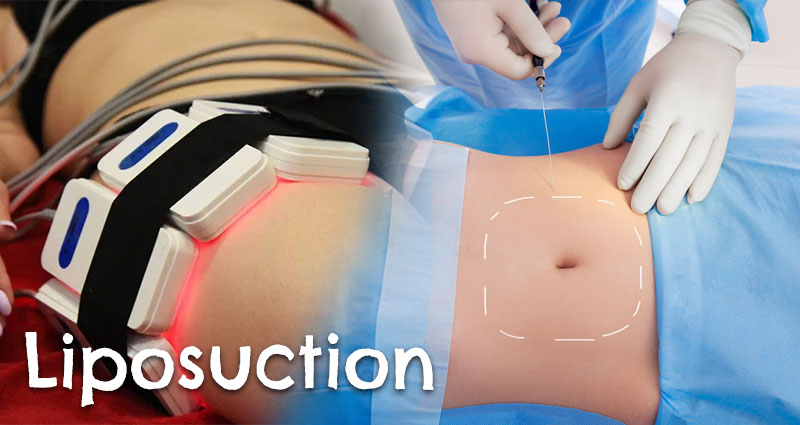Until recently, the best-known procedure that could rid a person of excess subcutaneous fat was liposuction, a process in which fat deposits were removed mechanically. Liposuction uses an invasive instrument and vacuum suction to remove the fatty substance from the body. Thanks to innovative developments, however, the range of cosmetology clinics has been enriched by various laser technologies, which enable minimal trauma to the patient’s skin, while at the same time maintaining a long-lasting effect.
Lipolysis refers to methods of correction of the body and face that do not require surgery and general anesthesia. The lipolysis process itself is characterized by the initiation of a set of cellular reactions that contribute to the removal of triglycerides from the cell, with their subsequent removal from the body naturally. Exposure can be mechanical, ultrasound, cold, but laser lipolysis is considered the most advanced and effective. In addition to eliminating subcutaneous fat through laser treatment, the patient receives a visible effect of rejuvenation and tightening of the skin, which cannot be achieved with liposuction.
The neodymium lasers ND: YAG, with a wavelength of 1064 nm, are considered the most suitable for laser lipolysis. The tissues of the body hardly absorb the neodymium radiation, which allows the laser to penetrate to a much greater depth than, for instance, the Erbium radiation. The wavelength of 1064 nm can target problem areas in the deeper layers of the dermis and lymph. Apparatus cosmetology uses lasers with different wavelengths, but only the 1064 nm wavelength allows radiation to reach the deepest layers of the skin without dissolving into tissue – all in a minimum of time.
Types of laser lipolysis
- Cold (laser cavitation) involves a wavelength of 650 nm, which does not even affect the upper layers of the skin and passes through superficially. However, it is not very popular with patients, as it requires exercising and dieting to produce a noticeable effect.
- Laser-assisted lipolysis has a wavelength of up to 1064 nm and features laser radiation directed directly at the fat cells. The radiation is directed through small punctures and intensely affects all layers of the dermis.
Advantages of laser lipolysis over liposuction
The only similarity between lipolysis and liposuction is that both procedures rid the body of excess fat. The differences, however, are much greater. Laser lipolysis is a more comfortable procedure for the patient than liposuction. Therefore, if you are so keen to get rid of annoying fat deposits, it is better to opt for a course of laser lipolysis.
Laser lipolysis is especially suitable for the areas that are difficult to treat with conventional liposuction. For example, the chin, shins, shoulders, areas under the shoulder blades, and the knees. The good thing about the procedure is that it does not require a general anesthetic.
The undisputed advantage is that the skin is not bumpy, as is common after all liposuction procedures. Furthermore, when comparing lipolysis and liposuction, the former is also favored by an accelerated recovery time. Most of the technologies that are used allow for a full recovery the very next day. The procedure is worth the money because the effect produced lasts for a long time. It is difficult to say anything about a specific time frame, as it all depends on the individual characteristics and peculiarities of each patient.
Laser lipolysis and liposphere therapy (Липосфератерапия)
Many cosmetic procedures utilize a holistic approach, taking into account the individual physiological factors of each patient. One of these treatments is liposphere therapy, which combines roller massage and laser lipolysis. Swiss biochemist Michael Schmidt first studied all known massage techniques, then analyzed his observations and evaluated the effectiveness of each method.
Liposphere therapy is based on mechanical and laser treatment. The mechanical treatment is performed with a roller massager touching all layers of the skin and partially the muscular tissue while the laser treatment is performed with laser arms with a wavelength of 1064 nm which allows for deeper penetration of the radiation into the fat cells.
During the procedure, two processes, breaking down of fat and its natural removal from the body, allows you to declare the stability of the effect, even after some time after the exposure. And non-invasive intervention eliminates pathologies and complications because liposphere therapy only starts the natural physiological process and with each subsequent session multiplies the effect of the previous one.
Liposphere therapy is considered to be a safe non-invasive procedure and therefore has a very narrow range of contraindications. There is no rehabilitation period after the procedure, and it can be done 2-3 times a week. The course involves 10 visits.












